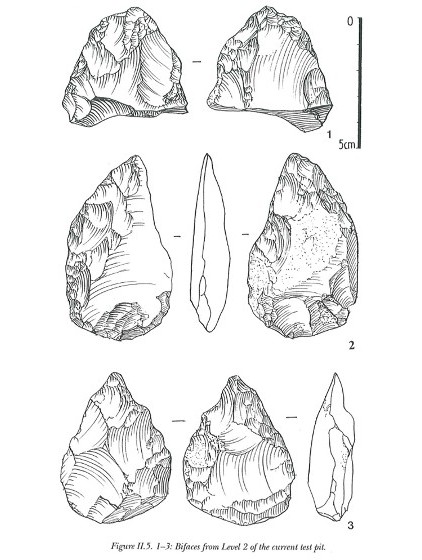Abri Peyrony - Dibble Lenoir Excavations
In 1987, Harold Dibble and Michel Lenoir started new excavations at Combe-Capelle Bas. This site is located at the base of the slope that descends from Abri Peyrony to the base of the Couze Valley. In a portion of this excavation, they found MTA type handaxes and wondered whether these deposits could derive from the Abri Peyrony positioned just above the site. So, in 1990, they opened a small test unit at the Abri Peyrony. This work was published as an appendix to their monograph on the Combe-Capelle Bas excavations.
The test pit was approximately 1.5 square meters. They describe two levels, one of which included MTA type bifaces.
The excavations were begun in the last year of the Combe-Capelle Bas project and the project geologist, Jean-Pierre Texier, argued that the deposits were in secondary position and derived from the overlying plateau. As a result of these two factors, Dibble and Lenoir closed the excavation without having reached bedrock over the entire surface opened and without having opened a large enough surface to properly understand the site's full context. They were unable to resolve whether deposits worth excavating still remained at the site.
